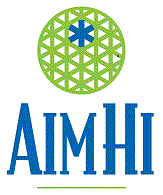WRDW Source | Comments by Matt Zavadsky
The latest news report about an issue facing many EMS systems and communities across the country.
AIMHI is hosting an international webinar with EMS, hospital and EMTALA experts on Tuesday, September 7th beginning at 1p Central Time.
Click here to learn more and register for the event.
-------------------
COVID surge overruns local hospitals, slowing ambulance responses
By Kennedi Harris
Aug. 30, 2021
https://www.wrdw.com/2021/08/31/recent-covid-surge-makes-augusta-ambulance-response-times-even-longer/
AUGUSTA, Ga. (WRDW/WAGT) - The number of COVID patients continue to grow at all of our local hospitals. We’re told inside some hospitals, hallways are lined with patients waiting in chairs.
At Augusta University Health, doctors say hallways are lined with beds. Outside the doors you may see lines of ambulances waiting to get in.
In the past, Gold Cross EMS, Richmond County’s primary ambulance service provider, has reported long wait times outside of hospitals. That’s holding ambulance units up and leaving fewer units available on the street. Now Gold Cross says the COVID surge is making those wait times even longer.
On Monday, under the emergency awning at University, there were lines of ambulances. AU Health and Doctors Hospital had a very similar sight. It’s an issue that COVID is making worse but there’s a way you can help.
Before you make the call be prepared because you might have to wait.
“We’re seeing wait times, that in some cases may seem astronomical. But this is a direct reflection of where we are based on COVID,” said Michael Myers, Gold Cross EMS director of business development.
An ambulance can’t just drop a patient off and go. They must complete a transfer of care to the hospital. But because ERs are full, EMS crews are sitting outside with patients waiting for an ER room to open up. Depending on the timing the wait can be anywhere from 30 minutes to as long as six hours.
“We can have a crew that can get to a hospital but, but they may have to wait there. In some cases, hours with a patient, because there’s no room inside,” he said.
In a real example from over the weekend, Gold Cross picked up a patient at 9:58 a.m. and arrived at a local hospital at 10:34 a.m. but couldn’t leave until a room was available at 6:43 p.m.
“We’ve always had wait times. COVID has extended the wait times” he said.
Myers encourages you to think before you call so you’re not taking ambulances away from possibly more critical needs.
“Because we are in these times of COVID, we have to make sure that we are using our resources in the most appropriate or efficient way as possible,” he said. “My thought processes - if you can drive yourself to an emergency room, you probably don’t need to call 911.”
Myers says they’ve even seen people calling an ambulance to get tested for COVID. Don’t do that he says, get tested outside of the hospital if possible. If you do need to be taken to the ER by ambulance have patience. You won’t be seen any quicker just because you come by ambulance. Hospitals are caring for the most critical needs first.


